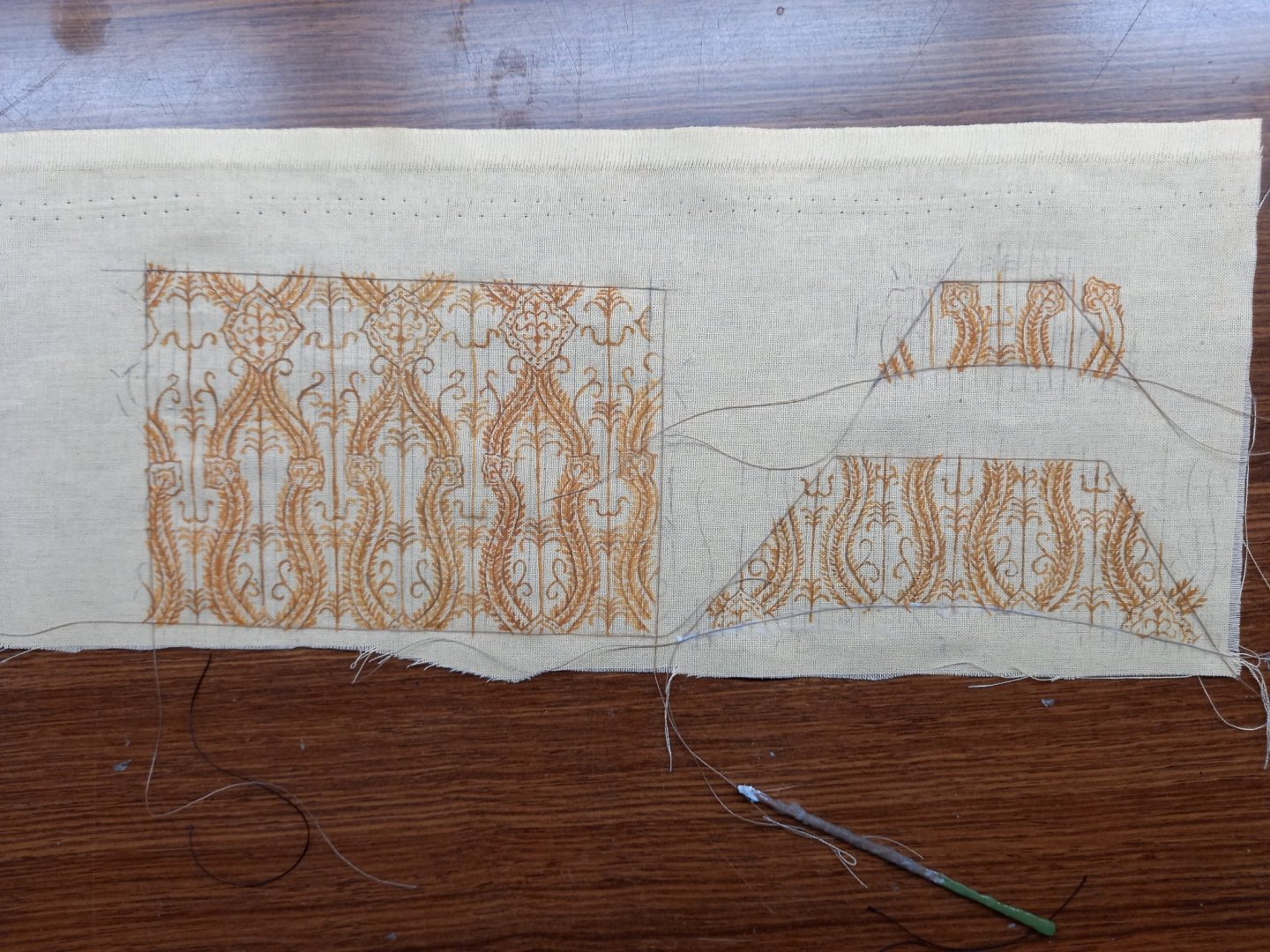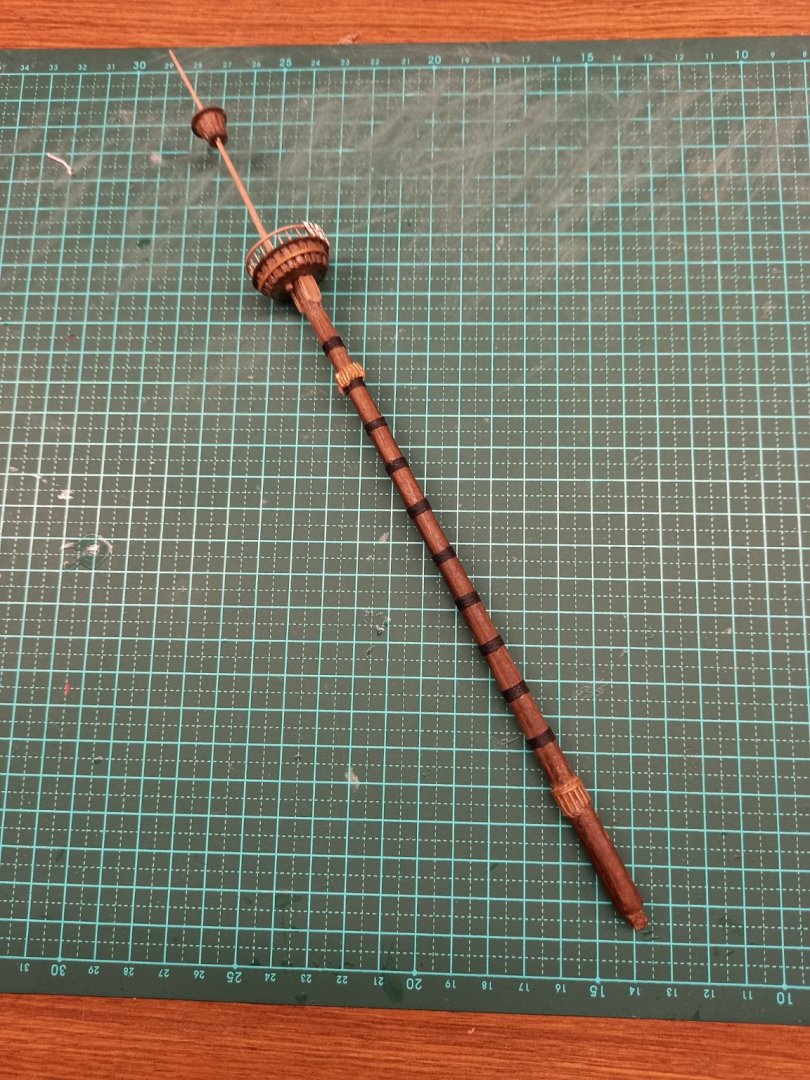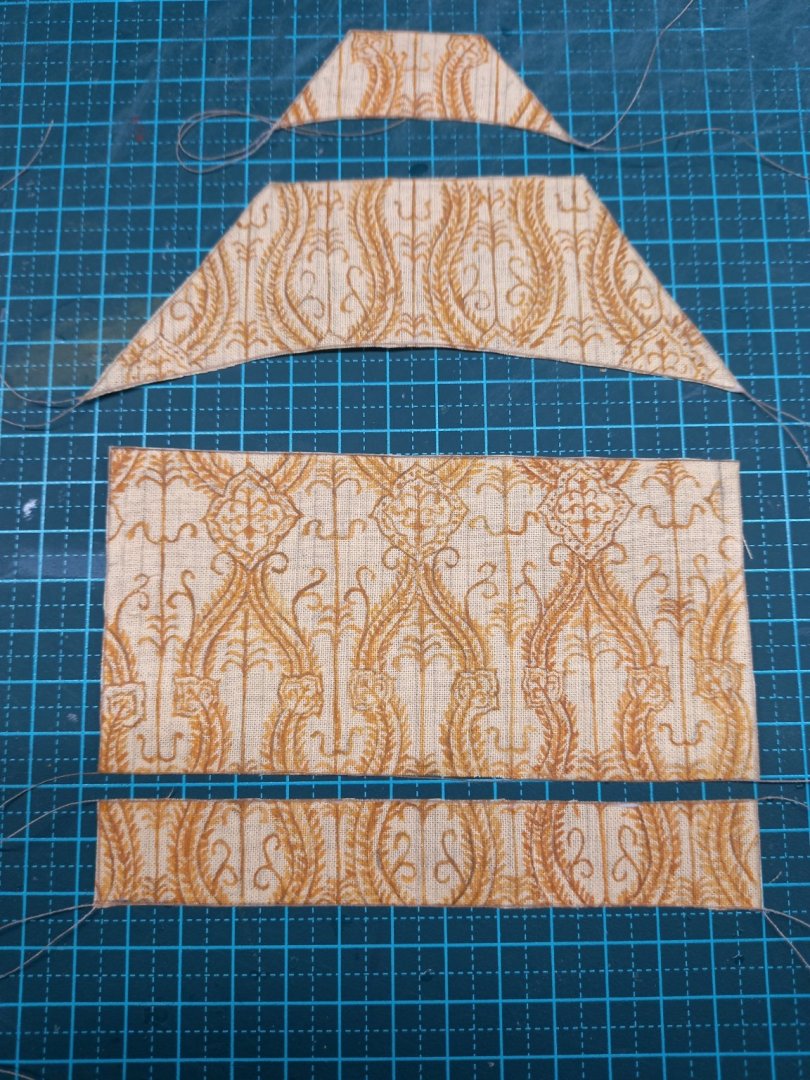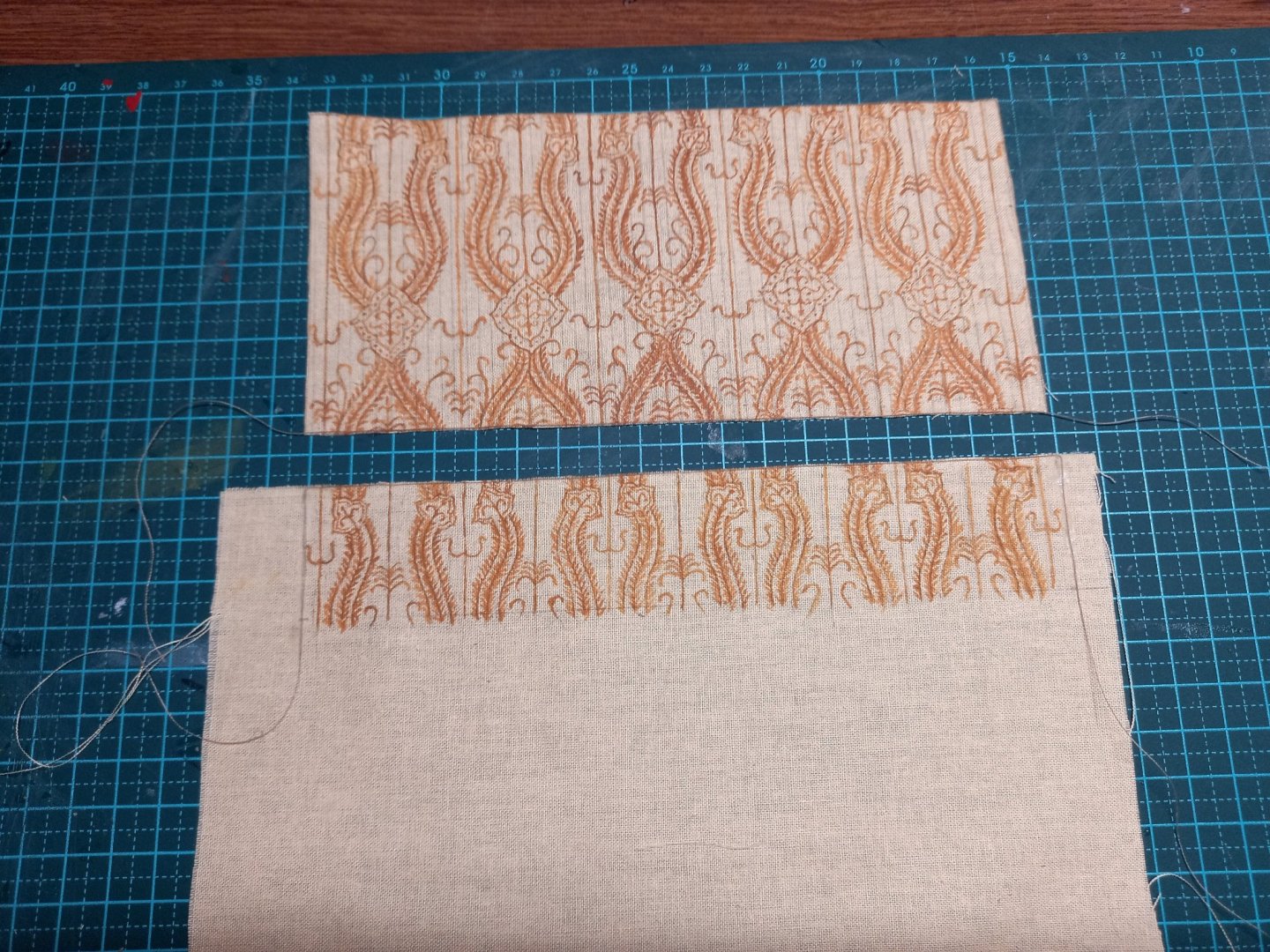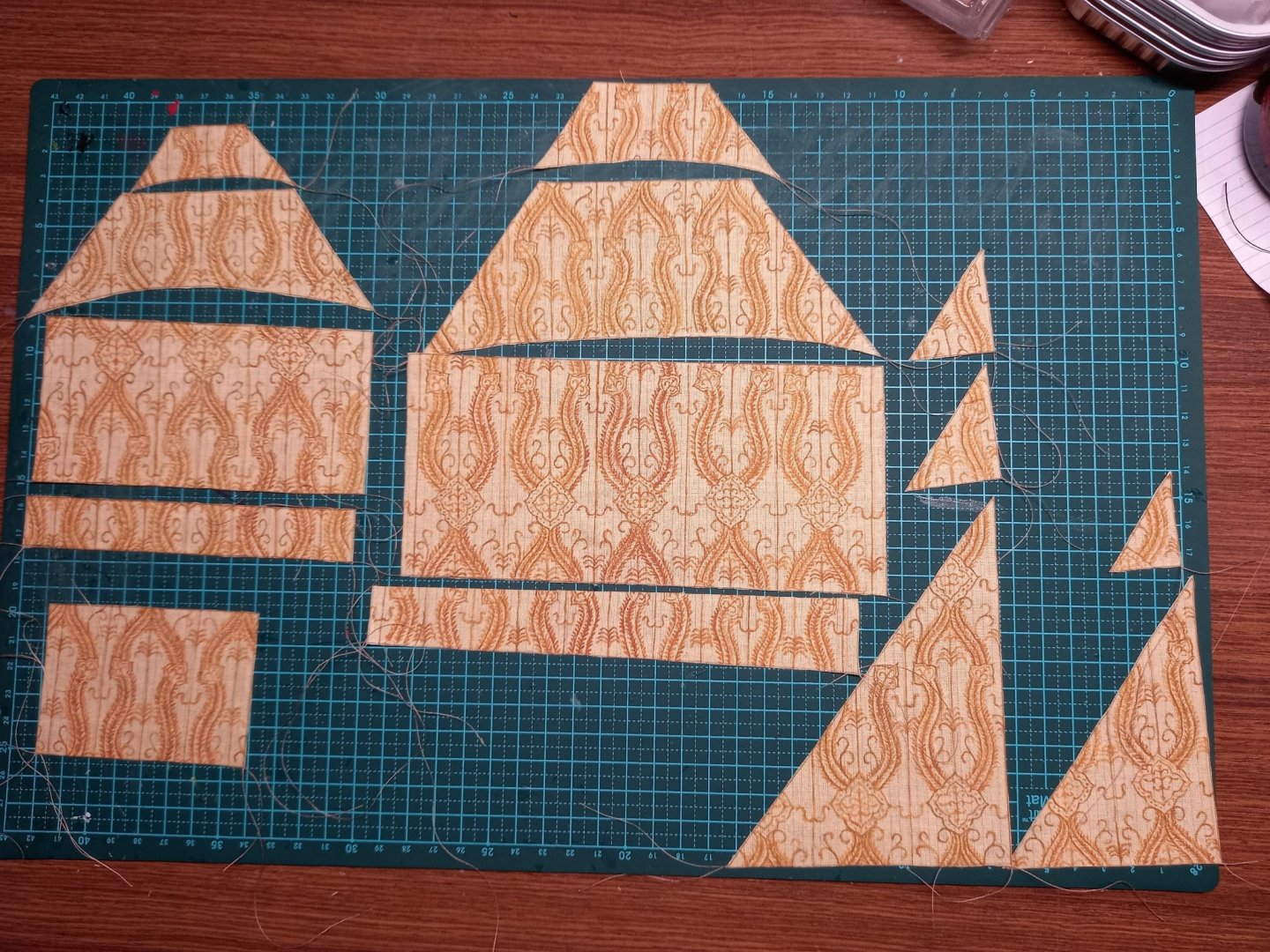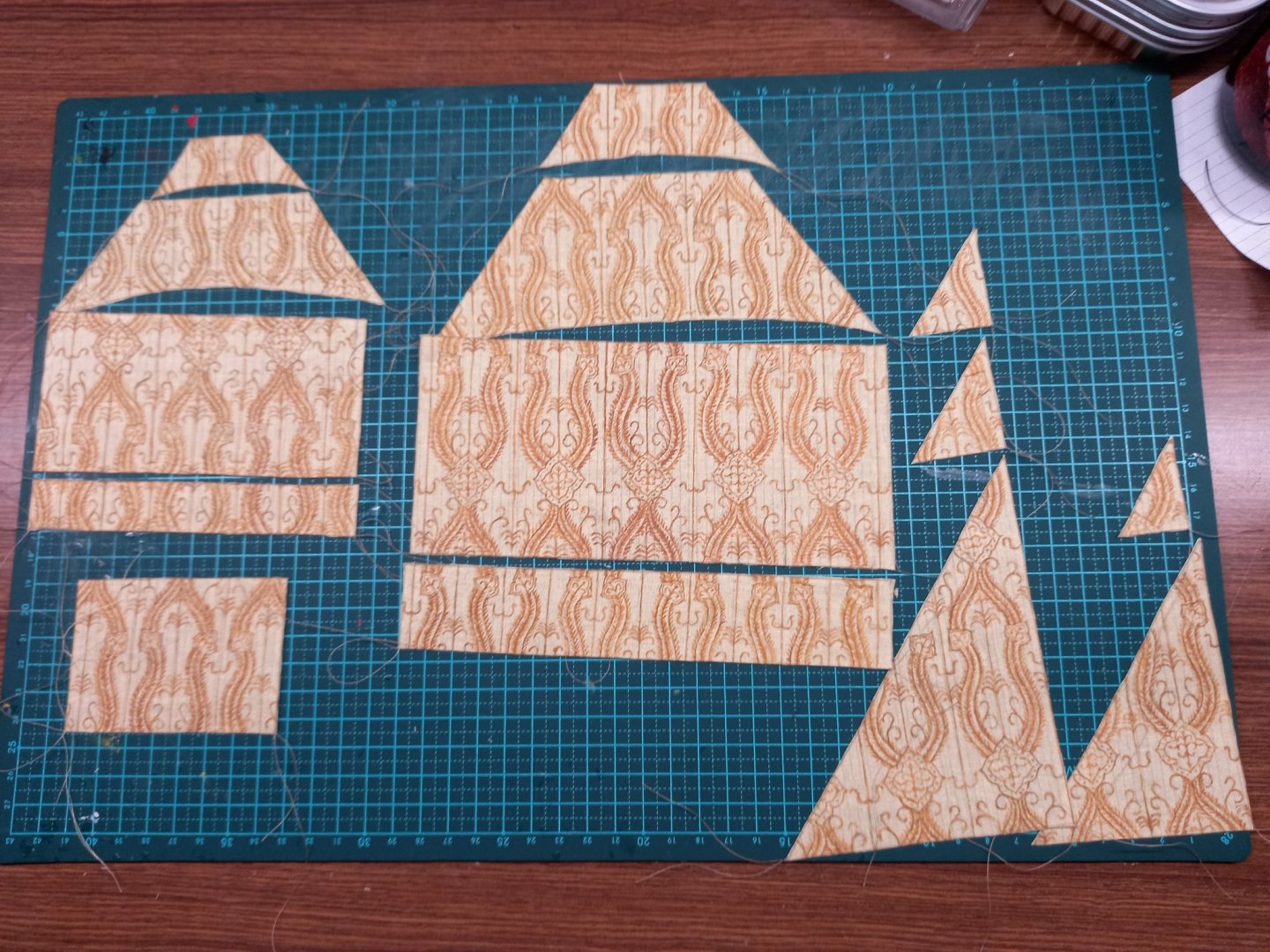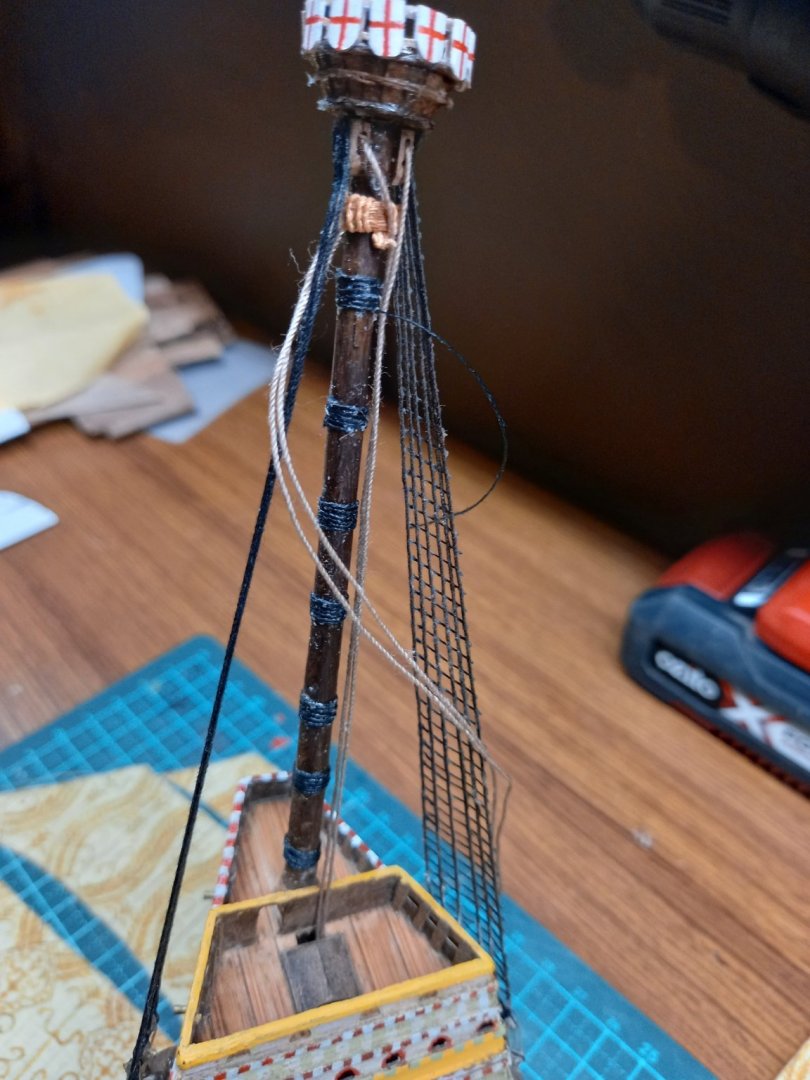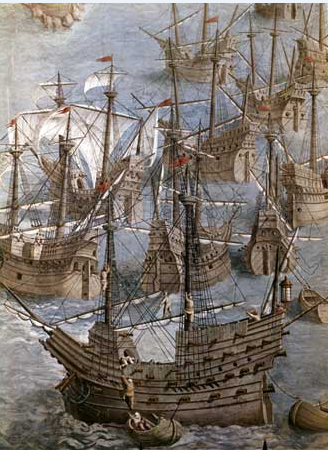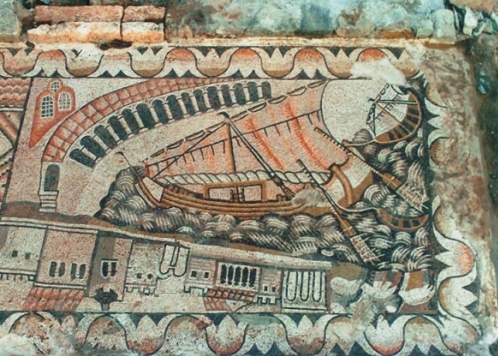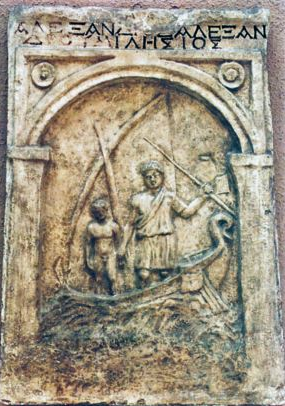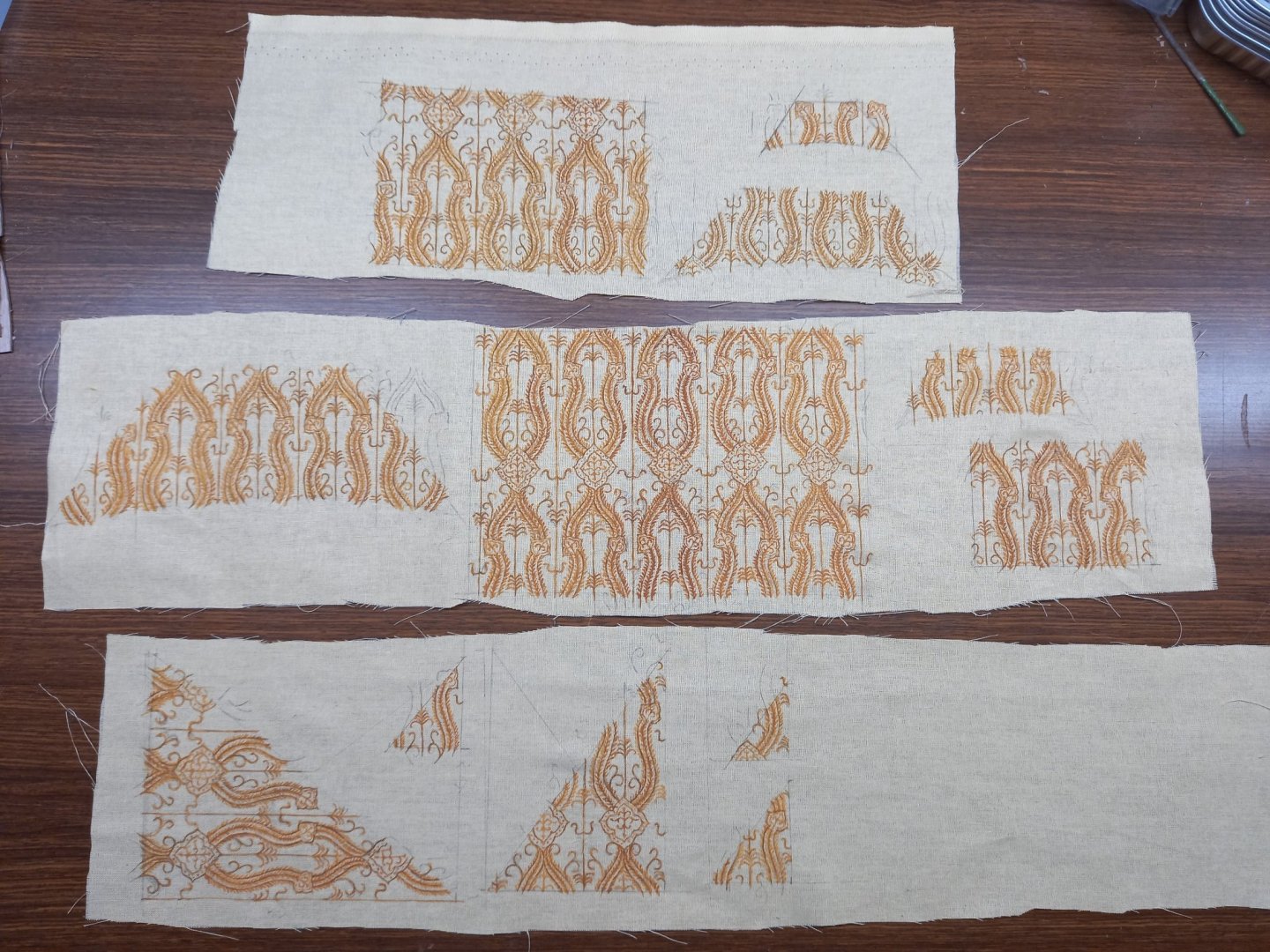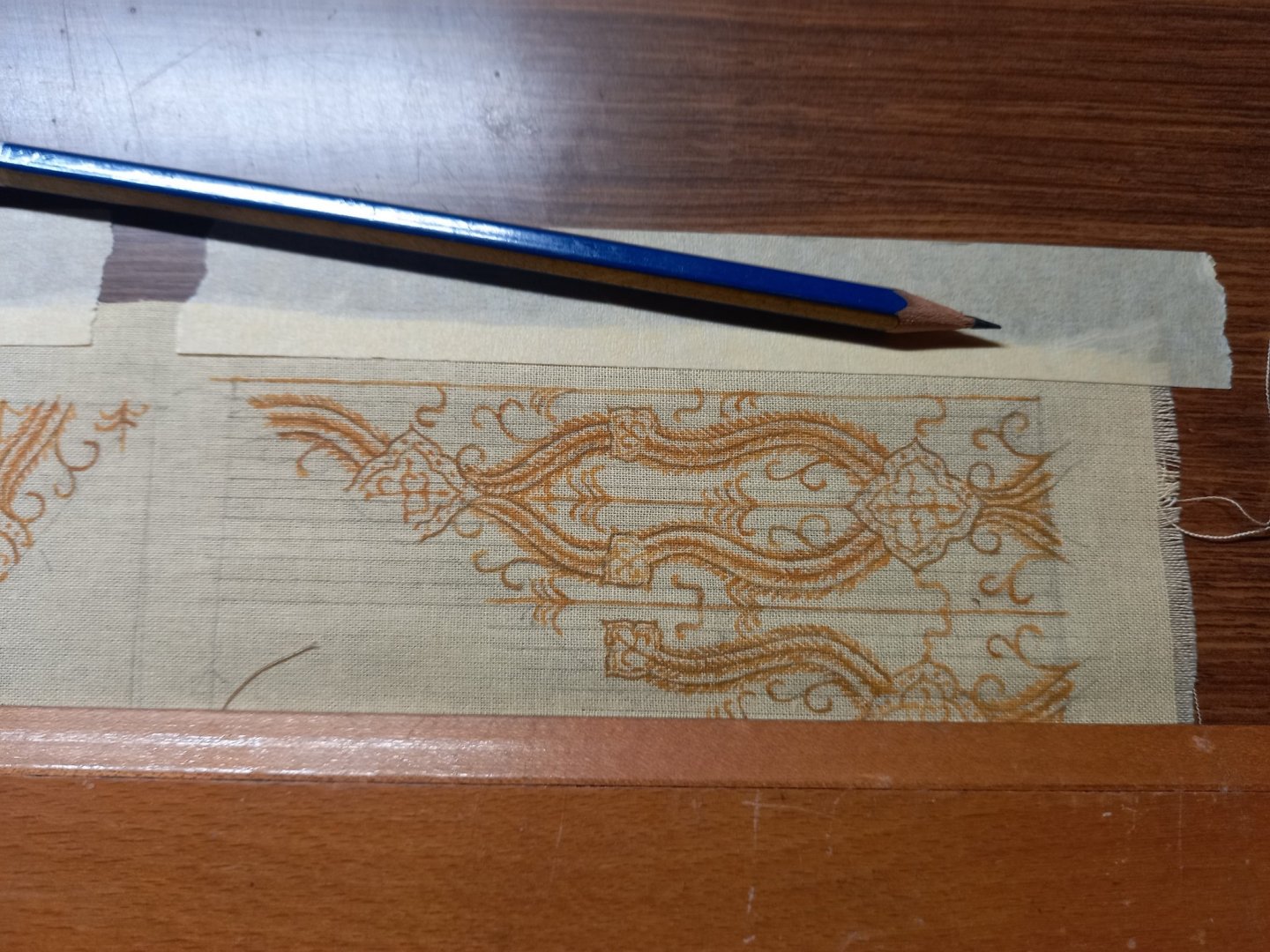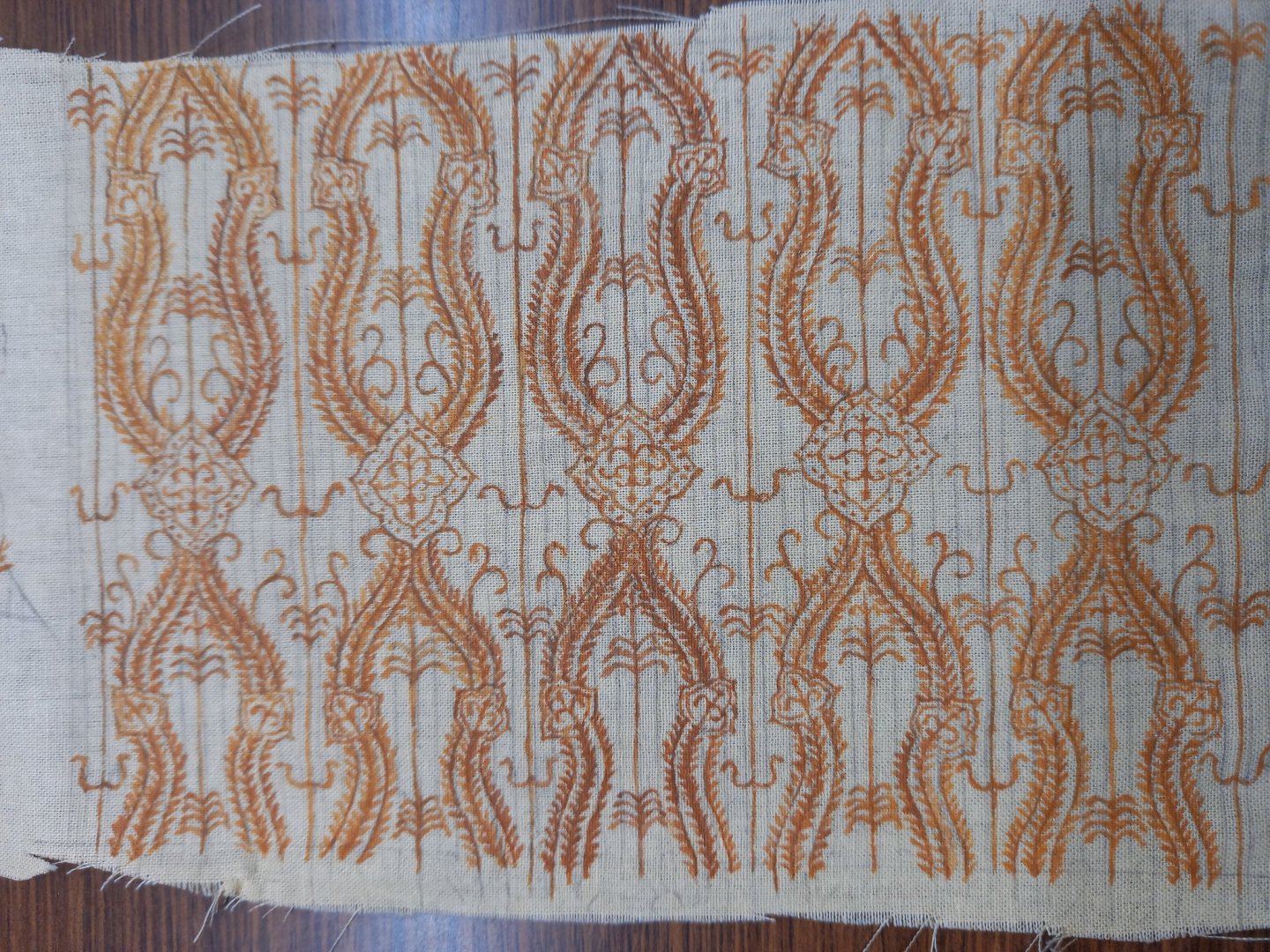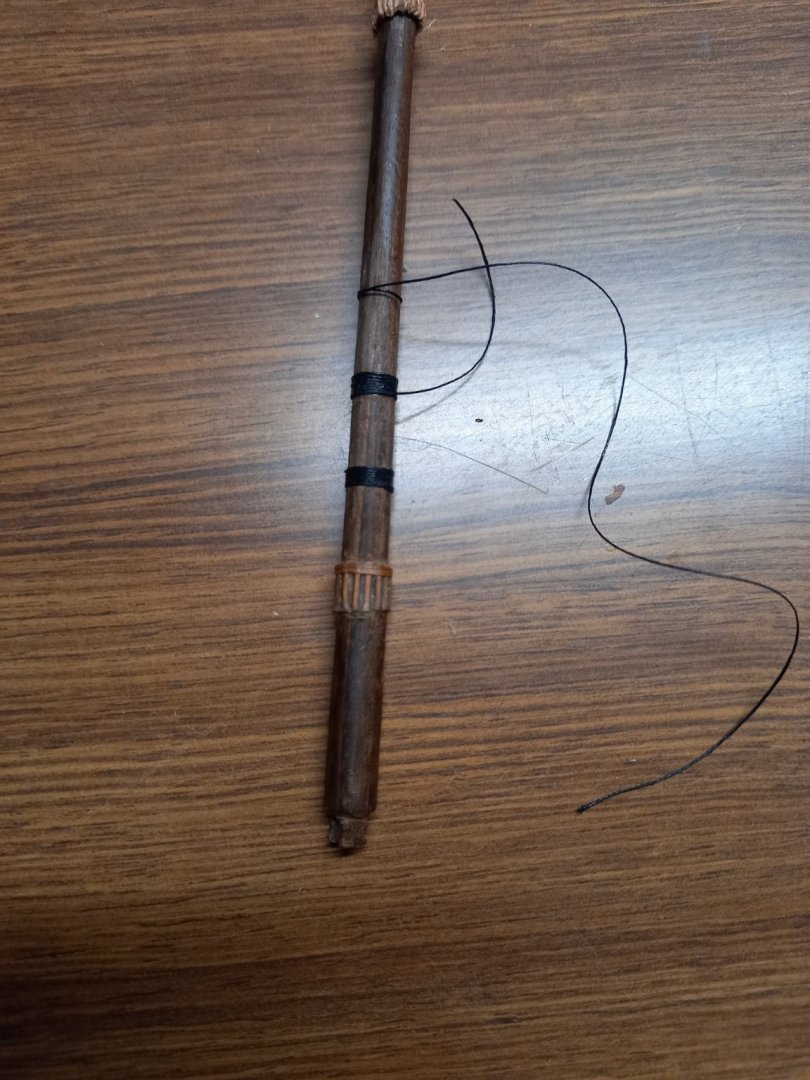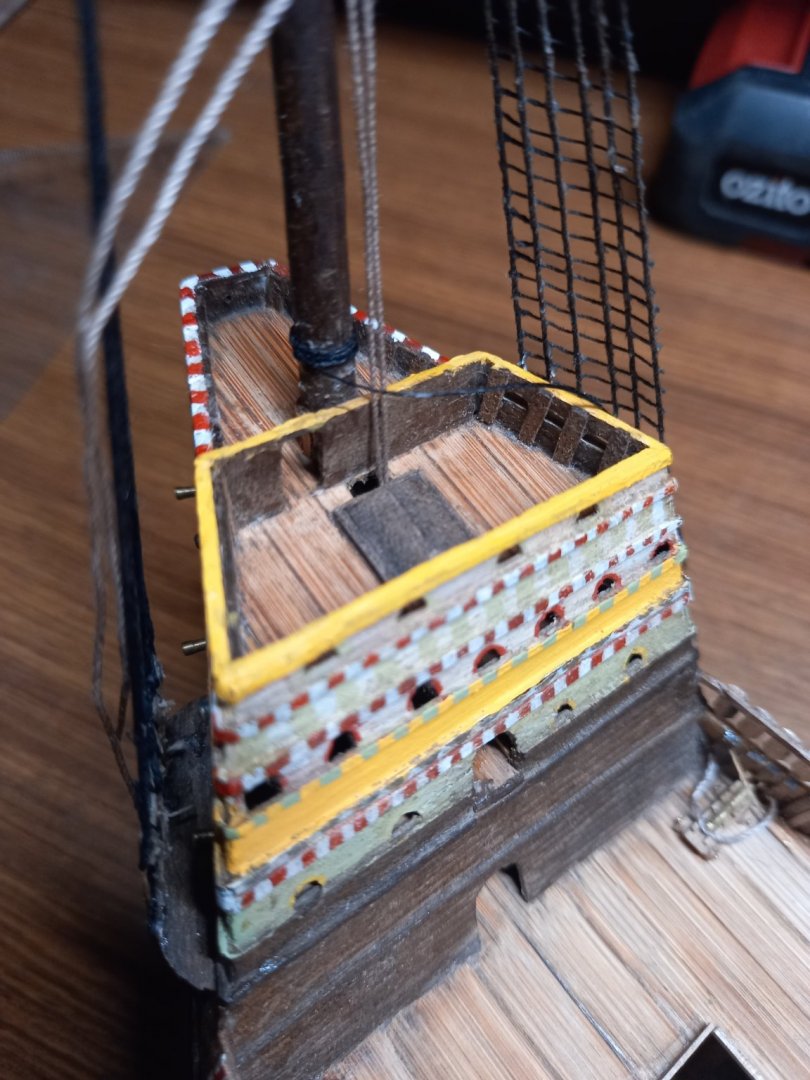-
Posts
7,985 -
Joined
-
Last visited
Content Type
Profiles
Forums
Gallery
Events
Everything posted by Louie da fly
-
I've added boltropes to all the sails And cut them out Foremast sails, including bonnet for the forecourse: And all the sails - from left to right; foremast and spritsail, main mast, mizzen (including lateen topsails!), bonaventure mizzen Unfortunately I stuffed up the bonnet for the main course - first I made it too shallow, then I cut it on the wrong line, so the join between the course and the bonnet was not square to the sail. Fortunately I was able to trim the course to size, but the bonnet had to be re-made: And here are all the sails with the new main bonnet. And I've done the wooldings for the main mast: And the foremast: Just need to trim free end from the the top woolding, and clean up the glue, which is a bit intrusive. Steven
- 740 replies
-
- Tudor
- restoration
-
(and 4 more)
Tagged with:
-
Making good progress, ON. It takes a special kind of insanity to build a galley (don't ask me how I know). Steven
- 62 replies
-
- amati
- greek bireme
-
(and 1 more)
Tagged with:
-
You've done a magnificent job, Bolin. She really looks beautiful.Truly a model to be proud of, and it has been a very enjoyable build to follow. Steven
- 179 replies
-
- longship
- Helga Holm
-
(and 1 more)
Tagged with:
-
Amazing that you have so closely duplicated the look of this ship Detail of the painting Expedition to the Third Islands 1583. Royal Monastery of El Escorial. Work of Granello, Tavarón, Castello and Cambiasso. without (apparently) having seen the picture. You've really captured this look which I've never seen in any other model. Steven
-
Hi Bob. I was hoping I wasn't coming across as nitpicking. I think what you've done so far is very good and if I could just nudge a little in the direction of better accuracy - in time to give you the option, rather than after it was too late - that's really all I was trying to do. Regarding messages, if you're using the system correctly (the pair of "speech balloons at the top of the page), the person addressed needs to notice that there's a message addressed to him/her (it comes up as a notification on their page) before they reply. They may not have been on MSW for quite some time, or just not look at the top of the page, or whatever . . . But most people do reply when they see the message. Steven
- 74 replies
-
- Santa Maria
- Amati
-
(and 1 more)
Tagged with:
-

New Member from Western Washington State
Louie da fly replied to Michael Jones's topic in New member Introductions
Welcome to MSW, Michael.That's a very nice-looking vessel - I have nothing but respect for people who build live-steam models. Do you have another project on the go? If you have, it'd be great if you started a build log. I'm sure a lot of people would like to see it. Steven -
Bob, that's a very nice piece of work. I feel I ought to comment, though, that the planking layout recommended by the kit manufacturer isn't how it was done in the real world. Not suggesting you pull everything apart and start again, but as your model looks like a double-planked model, for your second layer of planking you might like to consider this link which goes through the steps of duplicating the planking layout used in actual practice. It is more complex than the way the kit manufacturer says to do it, and you may decide to stick with what you're already doing. That is totally ok. It's your model, and you have every right to do it however you wish. Just thought I'd let you know in case you feel it might be worthwhile. The vessels of this period are a favourite of mine, and I always love to see another one being built. Keep up the good work. Steven
- 74 replies
-
- Santa Maria
- Amati
-
(and 1 more)
Tagged with:
-
Swords were highly valued (and expensive) personal items - each would been in its scabbard, carefully wrapped individually in (presumably) oilcloth, and probably in the personal possessions of the individual owners. Only a few high status warriors would have owned them. Axes (single and two-handed) would have been more common, with spears the most common of all. Though those wrapped spear shafts look good, they appear rather too thick? They wouldn't in real life been thicker than maybe an inch an a half or two inches. Otherwise they would be (a) too heavy and (b) too hard to get a good grip on. After all, they usually doubled as "javelins" in battle, so shouldn't be too heavy to throw. The shorter ones would be no less than 6 feet long (though personally I never liked using anything that short - it put you too much within reach of the opponents' swords and axes); the longer ones more like 9 feet. Everything else looks absolutely brilliant. I'm very impressed. The barrels, the open "scuttlebutt", the chests - all add verisimitude to the presentation. Regarding the (unspecific) oilcloth bundles, I think they look best with the rope around them. The shields are a problem. Stacked like that on the deck they'd slide over each other and be all over the ship, the moment you got into the ocean swell. There's just no information available on how they were stored if not at the sides of the ship. Maybe tie them down with a net? Or perhaps store them under the oar-benches - amidships (so they didn't get in the way of the oarsmen) ?
-
That's amazing, mate! You've achieved a hell of a lot in just a year, and it was certainly worth the time spent. This is perhps the most beautiful model of a Viking ship I've ever seen . Steven
-
Possible, but in my opinion it would be fairly easily possible to represent a square sail, even if somewhat too narrow, in the space available, without having to slant the yard as shown. It seems to me if it quacks like a duck, it's a duck. There has been a lot of academic discussion of the origin of the lateen sail - not only where it first appeared, but when. It was thought for a long time that the lateen originated among the arabs and appeared in the Mediterranean quite late, but there has now been quite a bit of evidence suggesting a much earlier, Mediterranean, origin for it. What is particularly unusual about this example is the clarity of the representation and the early date. The next earliest representation I'm aware of is the 5th century AD Kelenderis mosaic, which strictly speaking shows a settee rather than a lateen; But certainly the overwhelming majority of representations of ships from this period show a square sail and I'd be very surprised if the Sea of Galilee ship had anything else. Steven
- 83 replies
-
- Sea of Galilee boat
- SE Miller
-
(and 1 more)
Tagged with:
-
Though the lateen is now known to have been developed earlier than previously thought - as evidenced by this tombstone, dated to the second century AD this is the only evidence for such prior to the 5th century; all other contemporary representations I'm aware of show square sails. So a square sail is far more likely for the Sea of Galilee ship, which is dated to the first century AD. Steven
- 83 replies
-
- Sea of Galilee boat
- SE Miller
-
(and 1 more)
Tagged with:
-
Good thought, Pat, but the thread is pretty stiff and isn't all that hard to thread through. Just fiddly and time-consuming. Steven
- 740 replies
-
- Tudor
- restoration
-
(and 4 more)
Tagged with:
-
Thanks everybody for the likes and comments. The weave of the cloth isn't as coarse as the camera makes it seem, and apart from keeping my hand still (and taking frequent breaks so I didn't start making careless mistakes) it was just a matter of following the lines I'd traced on the fabric through the template. I used a very fine watercolour brush and watered-down acrylic paint. After all the paint was properly dry I went over the sails with a soft eraser to get rid of as much of the remaining pencil marks as I could. I'm now in the process of adding bolt-ropes (photos later) - by gluing cotton thread to the edges of the sails with PVA (white) glue. I did a test piece first and it worked well. Once the glue is properly dry, I can cut around the outside of the bolt-ropes - doing it this way means the sails don't warp and lose their shape (particularly the lateens, which are cut diagonally across the weave) after cutting. I developed this technique on my previous build, the lateen-rigged dromon. Steven
- 740 replies
-
- Tudor
- restoration
-
(and 4 more)
Tagged with:
-
It's been a while since I posted any progress. It's taken some time to get things done. Well, here are the sails all painted . . . A bit of variation in the colour - a result of having to mix the paint up in separate batches, as it dries pretty fast. But not too bad, overall. I'm pretty happy with it. At this scale I wasn't prepared to do separate cloths for the sails or do stitching to indicate it - instead I did what I did back in the day - mark the joins with a 2H pencil. Looks pretty good. I had forgotten to add the wooldings to the main and foremasts. Not too much of a problem with the main: But as the foremast was already in place (when I was removing everything else to fix the ship up, I'd been unable to remove it without causing damage) I should have put the wooldings on before I added the shrouds. As it is I'll have to thread the cord around the mast past all the shrouds and the tyes for the foresail. It sucks a bit, but it just takes a bit more work. First one under way - a few more turns still needed. Steven
- 740 replies
-
- Tudor
- restoration
-
(and 4 more)
Tagged with:
-
Sounds like a great project. Looking forward to seeing your progress on this one. Steven
- 83 replies
-
- Sea of Galilee boat
- SE Miller
-
(and 1 more)
Tagged with:
-
Oh, yes - those old favourites, like "Mama hat mir gesagt, ich soll nicht kommen" Steven
- 130 replies
-
- wütender hund
- hanseatic
-
(and 2 more)
Tagged with:
-
I think you're right, mate. Just have another go at it. My own workshop is littered with first attempts - it's part of the learning process. Here's the tripod and cauldron for you, And here are the dimensions and some construction details: http://warehamforgeblog.blogspot.com/2020/04/oseberg-tripod-and-cauldron-refining.html Steven
-

HMCSS Victoria 1855 by BANYAN - 1:72
Louie da fly replied to BANYAN's topic in - Build logs for subjects built 1851 - 1900
Brilliant work, Pat. That's just beautiful! Steven- 993 replies
-
- gun dispatch vessel
- victoria
-
(and 2 more)
Tagged with:
-
Looking good so far. I look forward to seeing the progress on this. Steven
- 179 replies
-
- longship
- Helga Holm
-
(and 1 more)
Tagged with:
-
It might b the fault of the wood you're using. I've never used basswood, but on looking it up it's described as being very good for carving, which presumably means it would be ok for making this chest. Maybe just try it again; but you could also try it in a different timber. Steven
-
I'm glad this discussion has been of help to you, rupertmac. I was going to say the planking should curve upward at the ends, but as you're doing close-ups this really isn't an issue. The sail and the planking look good in the trailer. Can I say, however, that the woman with a naked sword hanging from her belt would be an accident waiting to happen . . . apart from cutting her belt, she'd be likely to hurt herself on the blade . . . Still, that's just me (having been a mediaeval re-enactor for many years) - nobody else is likely to notice. Unfortunately we haven't heard from deperdussin1910 since November 2018 - it would be really nice to see if he continued with his project (hint, hint). Steven
- 27 replies
-
- irish galley
- galley
-
(and 1 more)
Tagged with:
-

Roter Löwe 1597 by Ondras71
Louie da fly replied to Ondras71's topic in - Build logs for subjects built 1501 - 1750
I'm not familiar with beech (we don't have many beech trees in Oz). I use pear wood and have good results. But the best is supposed to be boxwood - I can't say from personal experience because I've never used it. Having said all that, you're doing very well with your lion, so I don't think there's a problem anyway. Steven
About us
Modelshipworld - Advancing Ship Modeling through Research
SSL Secured
Your security is important for us so this Website is SSL-Secured
NRG Mailing Address
Nautical Research Guild
237 South Lincoln Street
Westmont IL, 60559-1917
Model Ship World ® and the MSW logo are Registered Trademarks, and belong to the Nautical Research Guild (United States Patent and Trademark Office: No. 6,929,264 & No. 6,929,274, registered Dec. 20, 2022)
Helpful Links
About the NRG
If you enjoy building ship models that are historically accurate as well as beautiful, then The Nautical Research Guild (NRG) is just right for you.
The Guild is a non-profit educational organization whose mission is to “Advance Ship Modeling Through Research”. We provide support to our members in their efforts to raise the quality of their model ships.
The Nautical Research Guild has published our world-renowned quarterly magazine, The Nautical Research Journal, since 1955. The pages of the Journal are full of articles by accomplished ship modelers who show you how they create those exquisite details on their models, and by maritime historians who show you the correct details to build. The Journal is available in both print and digital editions. Go to the NRG web site (www.thenrg.org) to download a complimentary digital copy of the Journal. The NRG also publishes plan sets, books and compilations of back issues of the Journal and the former Ships in Scale and Model Ship Builder magazines.


